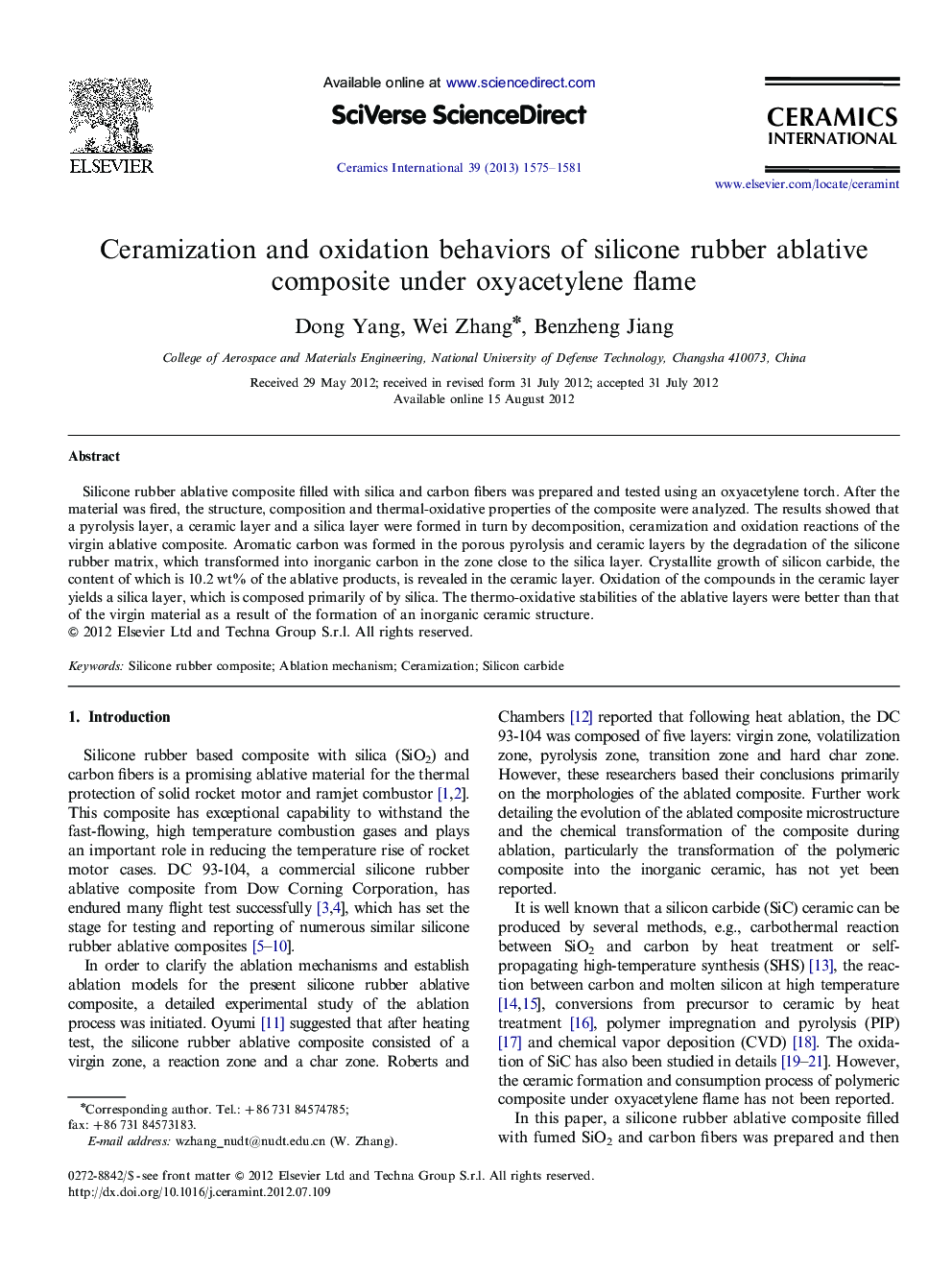| Article ID | Journal | Published Year | Pages | File Type |
|---|---|---|---|---|
| 1462206 | Ceramics International | 2013 | 7 Pages |
Silicone rubber ablative composite filled with silica and carbon fibers was prepared and tested using an oxyacetylene torch. After the material was fired, the structure, composition and thermal-oxidative properties of the composite were analyzed. The results showed that a pyrolysis layer, a ceramic layer and a silica layer were formed in turn by decomposition, ceramization and oxidation reactions of the virgin ablative composite. Aromatic carbon was formed in the porous pyrolysis and ceramic layers by the degradation of the silicone rubber matrix, which transformed into inorganic carbon in the zone close to the silica layer. Crystallite growth of silicon carbide, the content of which is 10.2 wt% of the ablative products, is revealed in the ceramic layer. Oxidation of the compounds in the ceramic layer yields a silica layer, which is composed primarily of by silica. The thermo-oxidative stabilities of the ablative layers were better than that of the virgin material as a result of the formation of an inorganic ceramic structure.
